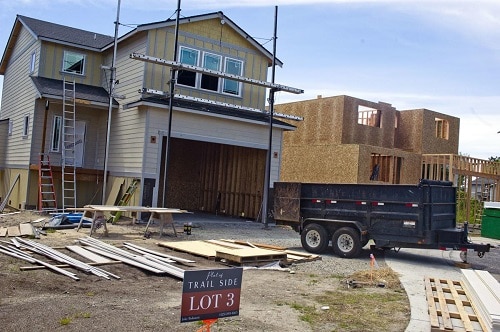Dealing With A Disrupted Construction Supply Chain
One of the most challenging lessons of the COVID pandemic is its lingering effect on the real estate market. Prior to the pandemic, home buyers already faced a lopsided seller’s market, characterized by rising prices and decreasing inventory. COVID has disrupted the home construction industry supply chain, slowing down the construction of new homes, and forcing home prices in the Charlotte area even higher.
Higher prices are the norm for almost all building materials, including lumber, insulation, and masonry, presenting new challenges for buyers and buyers’ agents. Lockdowns imposed during the COVID pandemic caused slowdowns and even complete stoppages at many factories and sawmills. The costs of some materials have almost doubled, which has prompted more than 75% of construction firms to delay or even cancel long-term projects. Little wonder new home sales have climbed to their highest level in 14 years.
The latest market update numbers reflect these trends. As of May 31, the median sales price in the greater Charlotte area surged by 21.8% to $323,000, an increase of $57,755 from last year. Unsurprisingly, the percent of original list price received grew by 4.1%. The escalating pace of sales continues, with the number of days on market until sale dropping to 16, a decrease of 55.6% from May, 2020. The inventory of homes for sale plummeted by 5,073 units, representing a shrinkage of 62%.
So what are construction firms doing to solve the problem? And what, if anything, can home buyers do?
One harsh lesson builders have learned from the pandemic shutdown is that over-reliance on the global supply chain, while alluring with its low prices and just-in-time inventory, are full of pitfalls, as the present shortage in materials has demonstrated. As a result, many local construction companies have switched to regionally based building materials, including flooring, carpet, and tiles.
Builders are also learning the value of fine-tuning their inventory control through the use of databases of all the materials needed for projects. Also, they’ve learned to ditch just-in-time inventory control in favor of ordering supplies as soon as the design is completed, even months in advance. And when possible, contractors are grouping their projects so that materials can be delivered together rather than piecemeal.
But home buyers don’t have to remain passive. For one thing, they and their buyers’ agents can become more adaptable. One positive trend arising from the urban housing shortage is a greater willingness to explore small towns and rural areas. Buyers wanting to know more about the great values and high quality of living in the small towns that surround the greater Charlotte area are in for some pleasant surprises. Many of these small towns have dynamic main streets with first-class dining and entertainment venues.
These are the overall numbers for the greater Charlotte Metro area. For more detail, see the reports for Charlotte, Matthews, and Huntersville.

